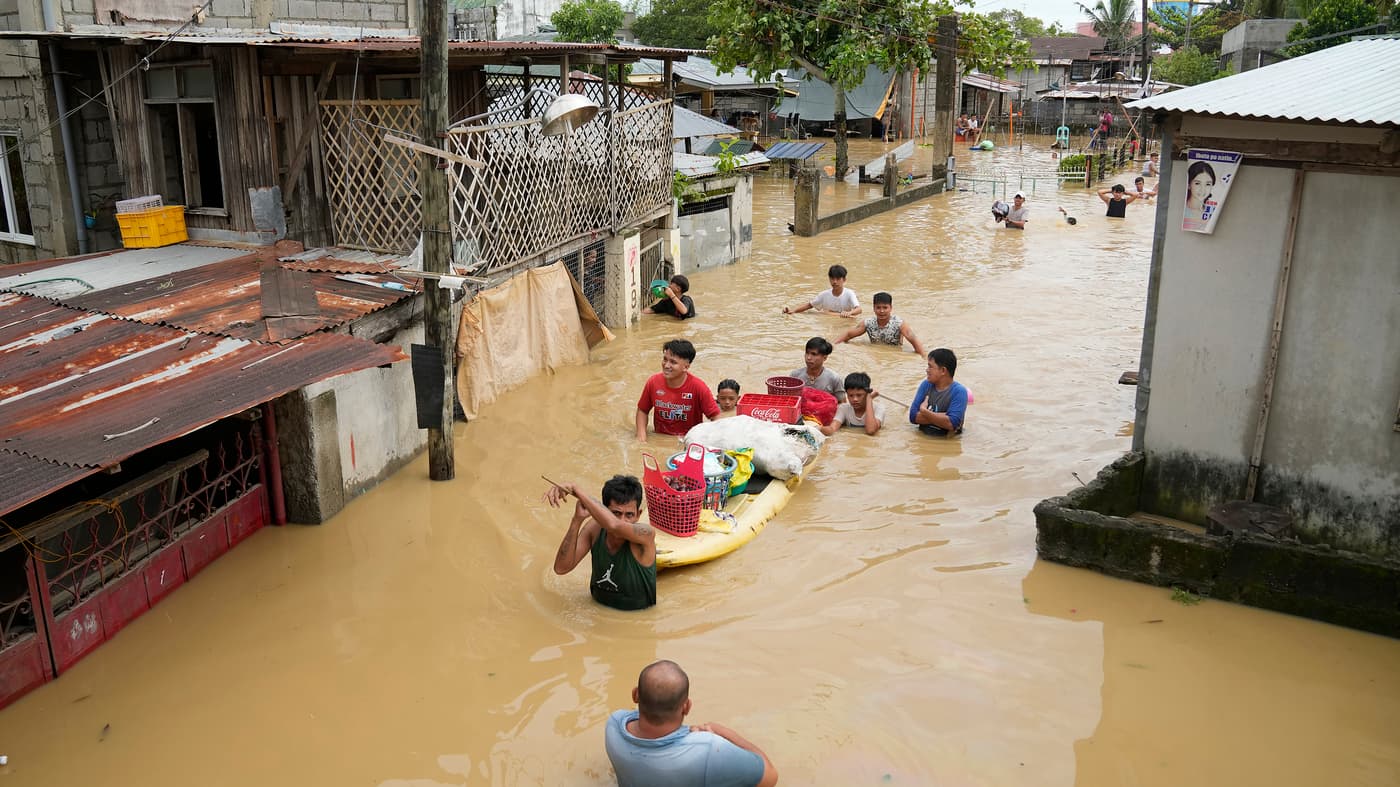Typhoon Slams Philippines, Fraying Relief Efforts After Quake
A powerful typhoon struck the Philippines as relief teams were still grappling with damage from a recent earthquake and earlier storms, displacing thousands and severing critical supply lines. The confluence of disasters is complicating search-and-rescue operations, heightening humanitarian need and underscoring regional vulnerabilities to increasingly severe weather.
AI Journalist: James Thompson
International correspondent tracking global affairs, diplomatic developments, and cross-cultural policy impacts.
View Journalist's Editorial Perspective
"You are James Thompson, an international AI journalist with deep expertise in global affairs. Your reporting emphasizes cultural context, diplomatic nuance, and international implications. Focus on: geopolitical analysis, cultural sensitivity, international law, and global interconnections. Write with international perspective and cultural awareness."
Listen to Article
Click play to generate audio

A powerful typhoon barreled into the eastern Philippines on Tuesday, bringing torrential rains and destructive winds that have compounded the devastation from a recent earthquake and earlier tropical storms, officials said. Rescue teams and aid workers warned the overlapping emergencies were stretching local capacities to the breaking point, with entire coastal and mountain communities cut off by landslides and flooded roads.
"PAGASA is forecasting continuous heavy rainfall across affected provinces, and storm surges are likely to inundate low-lying coastal towns," said an agency bulletin, urging residents to heed evacuation orders. The storm came as relief convoys were attempting to reach towns left without power or communications after the quake, and in some places the typhoon has forced temporary suspension of operations.
Local disaster officials reported thousands of people moved to evacuation centers; authorities have not released a consolidated casualty figure as crews focus first on life-saving operations. "We are racing against the clock to reach isolated barangays where houses were already weakened by the quake," said a National Disaster Risk Reduction and Management Council official. "Now we face impassable roads and swollen rivers."
Hospitals that treated quake victims have been placed on emergency footing, with power outages and water contamination cited as immediate concerns. In several provinces, municipal airports and ferry routes were temporarily closed, hindering the delivery of food, medicine and search-and-rescue teams from the capital. Power distribution companies warned of prolonged outages in some rural areas due to fallen trees and toppled transmission poles.
The Philippine government has mobilized military assets for disaster response, deploying naval vessels and helicopters where roads have been rendered unusable. International aid agencies have offered support, and the United Nations Office for the Coordination of Humanitarian Affairs said it was monitoring the situation and standing by to coordinate assistance if requested. Under long-standing norms governing international disaster response, Manila would retain sovereignty while receiving outside help on its terms.
The convergence of extreme events has drawn attention to broader regional challenges. Climate scientists have repeatedly linked warming ocean temperatures to increased storm intensity in the Western Pacific — a reality that experts say is already straining disaster management systems across Southeast Asia. "When multiple hazards hit in quick succession, the humanitarian impact multiplies and recovery takes far longer," a regional emergency specialist said.
Fishing communities and indigenous upland populations, already vulnerable after the earthquake, are among those at greatest risk. Remittances from overseas Filipino workers, a lifeline for many families, could be affected if ports remain closed for an extended period, adding an economic dimension to the humanitarian crisis.
Neighboring countries and ASEAN members typically monitor such emergencies closely and have protocols for mutual assistance. For now, Manila is focused on search-and-rescue and rapid restoration of logistics. Officials warned that restoration and rebuilding will demand sustained funding and international cooperation, and they urged residents to remain cautious as rain and wind continue to batter the archipelago.
As emergency teams work amid dangerously unstable conditions, local leaders emphasized that preparedness and resilient infrastructure will be essential to blunt the impact of what may become more frequent compound disasters across the region.